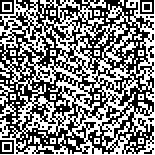周青青,刘昊宇,赵德福,等.工作记忆训练对脑卒中患者执行功能及日常生活活动的影响[J].中华物理医学与康复杂志,2022,44(1):25-29
扫码阅读全文

|
| 工作记忆训练对脑卒中患者执行功能及日常生活活动的影响 |
|
| |
| DOI:10.3760/cma.j.issn.0254-1424.2022.01.004 |
| 中文关键词: 执行功能 工作记忆 脑卒中 上肢 日常生活活动 |
| 英文关键词: Executive functioning Working memory Stroke Activities of daily living |
| 基金项目:苏州市民生科技关键技术研究项目(SS2019051);苏州大学横向课题项目(H201173) |
|
| 摘要点击次数: 5143 |
| 全文下载次数: 11619 |
| 中文摘要: |
| 目的 观察工作记忆训练对脑卒中患者执行功能及日常生活活动能力的影响。 方法 采用随机数字表法将46例脑卒中患者分为观察组及对照组,每组23例。2组患者均常规给予认知康复训练(包括计算机辅助认知训练及上肢机器人虚拟情境训练),观察组患者在此基础上辅以工作记忆训练(主要包括活动记忆训练和回忆任务训练)。于治疗前、治疗4周及8周后分别采用连线测试A(TMT-A)、连线测试B(TMT-B)、额叶功能量表(FAB)及威斯康星卡片分类测试-64(WCST-64)评估2组患者执行功能情况,采用功能独立性量表(FIM)评测患者日常生活能力。 结果 治疗前2组患者TMT-A、TMT-B、FAB、WCST-64及FIM评分组间差异均无统计学意义(P>0.05);治疗4周后发现观察组TMT-B评分[(205.47±38.88)分]、WCST-64测试结果、FAB评分[(12.43±2.27)分]及FIM评分[(78.17±12.62)分]均显著优于治疗前及对照组水平(P<0.05);治疗8周后发现观察组TMT-A评分[(92.95±26.70)分]、TMT-B评分[(174.13±32.03)分]、WCST-64测试结果、FAB评分[(14.26±2.45)分]及FIM评分[(88.30±13.46)分]均较治疗前及对照组明显改善(P<0.05)。 结论 工作记忆训练能有效改善脑卒中患者执行功能及日常生活活动能力,该疗法值得临床推广、应用。 |
| 英文摘要: |
| Objective To explore any effect of working memory training on executive functioning and ability in the activities of daily living after a stroke. Methods Forty-six stroke survivors were randomly divided into an experimental group and a control group, each of 23. Both groups received conventional cognitive rehabilitation (including computer-assisted cognition training and virtual reality training using upper limb rehabilitation robots), while the experimental group also received working memory training. Before, as well as after 4 and 8 weeks of the treatment, both groups′ executive functioning was evaluated using the Trail Making test, the Frontal Assessment Battery and the Wisconsin Card Sorting Test-64. Ability in the activities of daily living was quantified using the functional independence measures (FIMs). Results There were no significant differences between the two groups in any of the measurements before the training. After 4 weeks the average scores of the experimental group on all four instruments were significantly higher than the control group′s averages. After 8 weeks the average scores had improved significantly more. The treatment group performed significantly better than the control group throughout. Conclusions Working memory training can improve executive functioning and the daily life of stroke survivors. |
|
查看全文
查看/发表评论 下载PDF阅读器 |
| 关闭 |